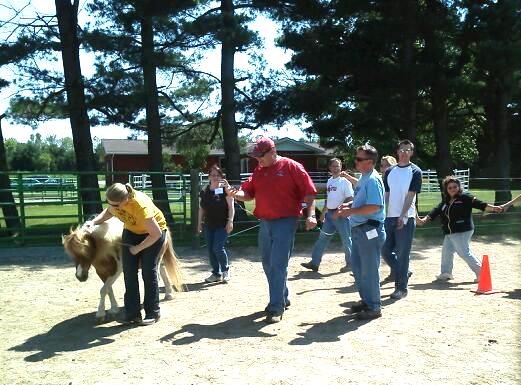 What if leaders and managers across your organization had the ability to adapt quickly, understand their team better and work together to solve organizational challenges? In today’s world, these skills are not only desirable, but they are necessary in order for organizations to thrive.
What if leaders and managers across your organization had the ability to adapt quickly, understand their team better and work together to solve organizational challenges? In today’s world, these skills are not only desirable, but they are necessary in order for organizations to thrive.
Traditional leadership and team development programs have not been enough to create the kind of change that needs to take place in order for leaders and managers to develop the skills necessary to be successful in today’s business environment. In an article titled Use it or Lose it in the February 2015 issue of “TD Magazine,” the authors share that “few [training] programs are designed to help learners permanently store information or help them when they need to retrieve essential knowledge.” The article is about the neuroscience of learning, retention and transfer and discusses the importance of putting into practice the lessons that are presented in corporate training. While the authors focus on implementing continuous opportunities for learners to practice what was presented in the “days, weeks and months following a training,” the need to include action learning in the training process can provide additional opportunities for learners to solidify what was presented in a training.
Action learning was developed in the mid-20th century and is becoming a widely used methodology in the world of leadership and team development. The essence of action learning is based in providing learners with activities that generate reflective questions and having a skilled facilitator guide participants through the process of gaining self-awareness and discovering the root issues that may be impeding forward movement in their department or the organization as a whole. According to Michael Marquardt, who authored an article on action learning in “TD Magazine,” there are 10 key elements that can increase the success of action learning:
- Presenting a problem that has some measure of urgency and complexity
- Powerful questions that encourage creative thinking and that the group can reflect on
- The mindset and values of the group members needs to be one of a willingness to change behaviors and work collaboratively
- Ensuring that the learning that takes place are skills that can be integrated into their work
- Clarification of norms – such as “focusing on questions, taking time to learn, seeking input from all members, respecting different perspectives, and accepting the role of the coach/facilitator”
- Commitment of top leadership to the action learning project
- Clear timelines and expectations
- Teams need to feel that they have the support from top management to implement what is learned
- Diversity among team members
- Most importantly – skilled coaches and facilitators who can “create an atmosphere of learning and reflective inquiry”
One form of action learning that is effective in meeting the 10 key elements identified by Marquardt is equine experiential learning, where horses co-facilitate the learning process alongside trained human facilitators. This learning modality is not based on learning horsemanship – in fact most programs use only ground activities, no riding is involved. However, the horses provide immediate, non-judgmental feedback to participants that then generates powerful reflective questions and is not a professional development experience that is quickly forgotten. Because of this, the learning tends to be retained and continues to be utilized long after participants have left the arena. At Wager’s Way, participants have the opportunity to put leadership and team development theory into practice through this unique, effective form of action learning and the lessons learned are powerful. One participant who was very skeptical at the start of a workshop wrote the following on his evaluation at the end of the day “I learned that I have a lot to learn about leadership.” This kind of outcome is action learning at its best.
